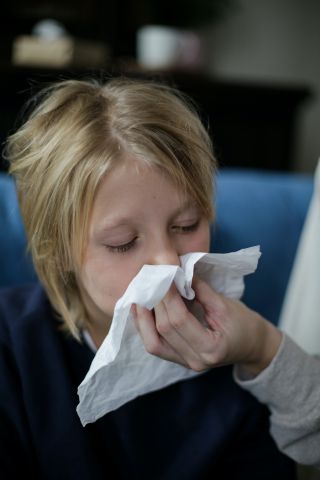Hypochondria
What Parents Should Know About Illness Anxiety Disorder
What causes it and how to minimize the risk for your children.
Updated September 27, 2023 Reviewed by Ray Parker
Key points
- When the anxiety is worse than the physical symptoms, the person might have illness anxiety disorder.
- The best treatment for the disorder is cognitive behavioral therapy.
- It’s estimated that illness anxiety disorder affects up to 10 percent of the population in the U.S.

The arrival of autumn is signaled by trees beginning to shed their leaves, cooler air, and children of all ages returning to the places where learning and stress are so intertwined: schools.
Many of these children, particularly the youngest among them, will likely begin to voice complaints of headaches, stomachaches, or vaguely not feeling well. Some of these complaints will certainly be signs of flu, the common cold, or another condition that should be checked out by their pediatrician. A significant number of the physical problems will more likely be a sign of stress rather than a sign of any identifiable illness.
The Parents’ Dilemma
Some children are more likely than others to experience stress or anxiety in physical form, that is, through minor or temporary symptoms that become a focus of their attention. This can be very disturbing to parents who doubt that their child is sick but want to be responsible and make the best decision. As is true for adults, some children are more likely than others to focus on physical discomforts and to report them.
Here is why some of us are more susceptible to physical discomforts and related worries, and what might be done in early childhood to minimize this risk for children during the school years and throughout their lives.
Which Is Worse: Symptoms or Anxiety?
It may first be helpful to distinguish two different types of health anxiety, both of which used to be grouped and labeled “hypochondriasis.”
For some individuals, the symptoms become the focus and the person becomes convinced that they are seriously ill because they have specific symptoms. If this problem is severe enough to interfere with daily functioning, such as missing days of school or work, it could be a somatic symptom disorder.
For others, the symptoms are minor or temporary and the anxiety about being ill is worse than the actual symptoms. When this situation becomes severe enough to interfere with daily life, it may be illness anxiety disorder. It’s estimated that illness anxiety disorder affects up to 10 percent of the population in the U.S.
If Physical Illness Is Ruled Out?
The best treatment for both disorders is cognitive behavioral therapy (CBT), with the addition of anti-anxiety medications in certain cases when anxiety symptoms are very severe. CBT is very effective in helping the person identify triggers of their anxiety, reduce their fears, and learn new coping skills.
Sadly, only about 30 percent of those with illness anxiety accept counseling as part of their treatment.
However, the adage, “an ounce of prevention is worth a pound of cure” certainly applies to illness anxiety. What better time to practice prevention of lifetime anxiety than during childhood?
Factors For Illness Anxiety Disorder
It may be helpful to understand what predisposes some individuals to focus on health concerns even when symptoms are minor or non-existent. Reasons that children might over-focus on their minor physical discomforts include the following.
1. Acute interoception.
Simply put, interoception is the conscious perception of internal bodily states. For most people, interoception is an automatic process of monitoring what’s going on in the body through signals sent from areas of the body to the brain and then the brain’s responses to meet the needs of the body. For example, you’re feeling too warm, so you decide to take off the extra layer of clothing.
Children (and adults) differ in their ability to make sense of the signals sent from the body to the brain, in terms of what they mean and what to do in response. For those with acute interoception or disrupted interoception, a minor physical sensation may signal distress to the brain, which is experienced as fear or anxiety.
A child with acute or disrupted interoception might feel more anxious in response to a minor stomachache than a child without this disruption.
2. Care-seeking due to unmet needs for attention.
The child might have learned that having a physical complaint gains them much-needed attention, whereas having an emotional need (feeling lonely or stressed) does not.
3. Prior serious illness or injury themselves or among close family members.
It would be understandable that a child with a prior serious illness would be particularly alert to signs of illness. They would also be especially alert to their physical health if a caregiver’s health had been seriously threatened.
4. Having a parent who is over-focused on health concerns.
Regardless of the parent’s actual health status, having a parent who is hyperaware of physical symptoms would possibly have the effect of modeling bodily vigilance for the child in that home.
5. Not having the language or the permission to verbalize feelings and concerns.
Childhood is an ideal time to learn to identify emotions, a skill that is so basic to emotional intelligence. In my work as a therapist, I am often struck by how many adults cannot identify what they’re feeling in terms of emotion.
They might identify feeling cold or tensed up but not connect these sensations with an awareness of “anxiety” until they practice being mindful of the connection.
If a child is feeling anxious but has no way to identify or verbalize that, they might resort to telling you that their “stomach hurts” or that they just “don’t feel good.”
Prevention Tips
While managing some of these five factors is beyond our scope as parents, there are some steps we can take to minimize the risk of illness anxiety throughout the child’s lifetime.
1. Teach them to identify their emotions and express them with words or creative outlets.
Allow and even encourage children to express their emotions in general and their distress in particular. Avoid comments such as, “You shouldn’t be upset,” “Don’t be sad,“ or “Don’t worry.” Does that type of comment ever help anyone?
Instead, try to give an empathic response, such as “I wouldn’t like that either,” “I’m sorry to hear that you’re upset,” or “Tell me more about that.” Responses such as these lay the groundwork for children to express their emotional distress and work out ways to manage it.
2. Manage your health anxiety without letting it spill over to your children.
Talking excessively about your health-related worries can suggest to your children or grandchildren that they should be vigilant about their bodies and signs of illness. Body vigilance (repeatedly checking the body for signs of illness) can be learned and is highly associated with illness anxiety disorder (The Diagnostic and Statistical Manual (5th ed.). If you become preoccupied with physical sensations, those sensations become stronger and last longer.
3. Model trust in your healthcare professionals and good judgment in seeking out medical help.
If your physician has ruled out serious illness and advised counseling to address your anxiety, take their advice. The worst case is that your health concerns might persist and lead you to get a second medical opinion. At least you’ll have more tools to manage your anxiety, which will most likely help you in coping with the inevitable uncertainties of life.
Final Thoughts
While some of the causative factors of Illness anxiety are likely inborn differences in interoception or unavoidable childhood trauma, others are preventable. With a greater understanding of the circumstances that increase the risk for illness anxiety, parents can better minimize this risk for their children.
The best use of creativity is imagination. The worst use of creativity is anxiety. —Deepak Chopra
References
American Psychiatric Association. (2013). Diagnostic and Statistical Manual of Mental Disorders (5th ed.). Arlington, VA
Illness Anxiety Disorder/ Diagnosis and Treatment retrieved from: https://www.mayoclinic.org/diseases-conditions/illness-anxiety-disorder/diagnosis-treatment/drc-20373787
Goleman, Daniel (1995). Emotional Intelligence: Why It Can Matter More Than IQ. Bantum Dell: New York, NY.
Yulika Foreman, PhD, LMHC @theexpertally on IG (examples of interoception difficulty)



